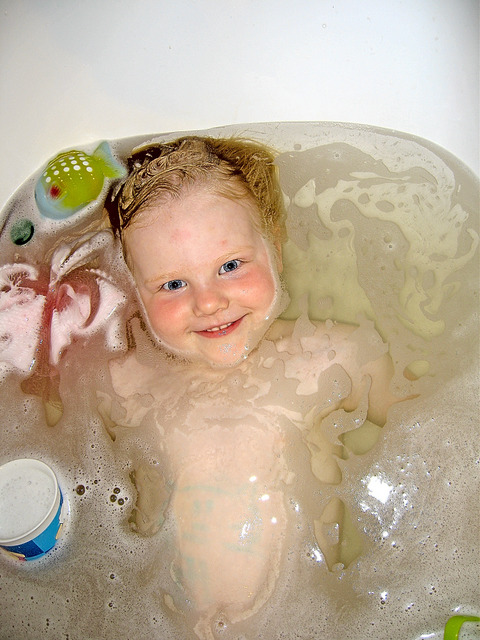During the past four years of my attachment parenting journey, I sometimes find myself in situations, especially with regard to discipline, that require me to step outside the box and out of my comfort zone.
A few months ago I was trying to get Ava, almost 4 years old at the time, to sleep. She had had a long day and was simply exhausted, so much so that every little thing was setting her off into a puddle of tears. I was getting frustrated because it seemed nothing I could do was right (in her eyes). Logically, I knew that she was acting this way because she was so tired and had passed the point of no return, but still I felt my frustration growing inside me.
She sat on the bed, slumped over crying and complaining about anything and everything imaginable and I wondered how could I get her to give in to her exhaustion and just lay down. I realized that reasoning with her wouldn’t work at this point. She was too far gone for that. I felt like yelling because my frustration was getting worse and worse – after all, I had things to do too and I didn’t want to spend all of my night trying to get her to sleep – but I knew that wasn’t going to help matters either.
Finally I decided what I really needed to do was take a deep breath, step outside of my comfort zone, grab a stuffed animal and start talking to her as the animal. Talking to Ava via a stuffed animal is a parenting “tool” my husband and I had used with success in the past, though not lately and, given the circumstances, I wasn’t sure how it would fly.
She has a bear named Roger who I always imagine talks with a Southern drawl and is good at cheering her up when she’s down, so Roger was the bear for the job. After a few seconds of talking as Roger, Ava stopped crying and began responding back to him, telling him what was going on with her. Although she couldn’t have done that for me, her mommy, she could do it for an impartial furry third party. 😉
Roger’s silly antics soon had Ava giggling and then he was able to talk her into laying down on her bed, relaxing and getting ready to sleep. As the bear said his good nights to Ava and me, Ava said her good nights in return and was soon calm enough to drift off to sleep.
As I left her room I couldn’t help but feel very proud of myself. I can’t claim to always respond well or the “right” way to every situation, but that night I put my pride and frustration aside and did what Ava needed to help her relax and get to sleep. Had I let my frustration overcome me there’s a good chance it would’ve taken me at least another 30-45 minutes and many more tears (probably on both of our parts) before she was asleep. But by tuning into her needs, letting go of all that I “needed” to get done, stepping outside of my comfort zone, and throwing in a little goofiness, I was able to get her to sleep calmly in much less time. And let’s face it, isn’t goofiness a prerequisite for becoming a parent? No? Well, it should be. The world just might be a happier place.
Amy Gates blogs about green living, attachment parenting, activism and photography at Crunchy Domestic Goddess.


